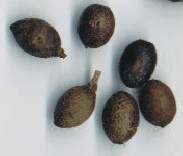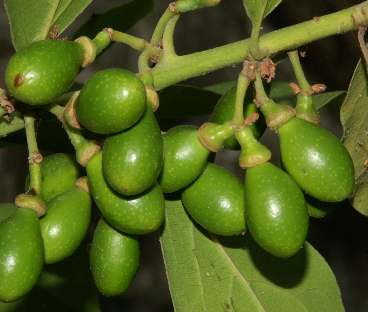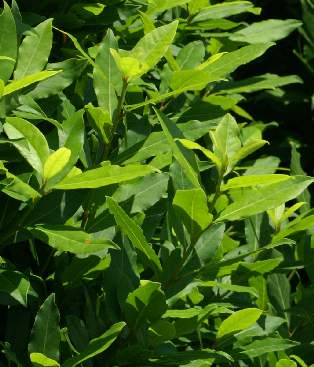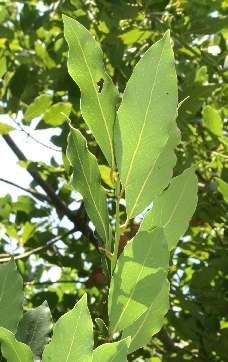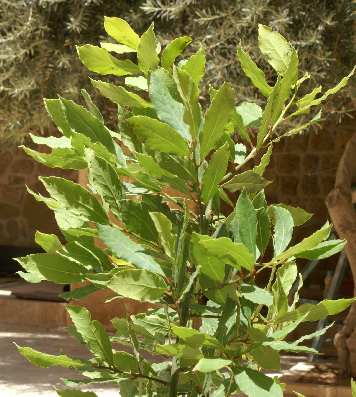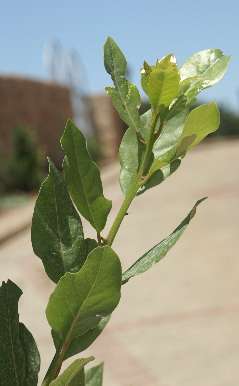
|
| Bay forest in Harbiye (ancient Daphne) near Antakya, Turkey |
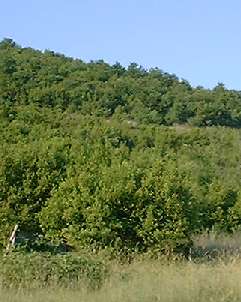
|
| Bay garden in Turkey |
Much later, the Roman Emperors made use of the laurel wreath as a symbol of the god Apollo; furthermore, bay leaves were a popular spice in Roman cookery (see silphion for details).
Today, bay leaves are a rather common flavouring in all Western countries; they
are used for soups, stews, sauces, pickles (see dill for herbal vinegar) and sausages; several fish
dishes profit greatly from bay leaves. In contrast to the majority of leave
spices, bay leaves can be cooked for prolonged time without much loss of aroma.
Fresh or dried bay leaves frequently show up in bouquet garni
(see parsley).

|
| Sterile twig of bay |
Fresh bay leaves are very strongly aromatic, but also quite bitter; by an appropriate drying procedure, bitterness is significantly reduced, and the flavour can even improve (cf. gale leaves, which resemble bay leaves in several aspects). After manual plucking and sorting, the leaves are quickly dried without exposure to sunlight. High-quality bay leaves are easily recognized not only by their strong aroma, but also by their bright green colour. A rule of thumb holds: The greener the colour, the better the quality. Bay leaves cannot, however, be stored as long as their tough texture might suggest, but should not be kept more than one year after plucking. Overaged leaves have lost their fragrance, show a brownish hue and taste mostly bitter.
The laurel fruits are less known, although they appear as part of commercial
spice mixtures. Because of their robust taste, they fit best to tasty sauces
and gravies; I like them most for potatoes. They are very good for venison
(together with juniper).
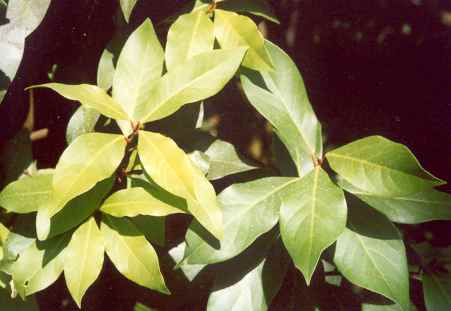
|
| A close laurel relative from the Azores, L. azorica |
Because of the popularity of bay leaves in the West, many exotic leaf spices
are commonly known as bay leaves
, though not botanically nor culinarily
related. In Asia, the Indian bay leaf comes from
a relative of cinnamon native to the Himalayas,
and Indonesian bay leaves stem from a tree
of the myrtle family. There are more bay
leaves
in the Western hemisphere: The highly aromatic Californian bay
leaves
(Umbellularia californica) native to the Western
USA are rarely traded because of potential health hazard. Also the so-called
Mexican bay leaves
(Litsea glaucescens) have little
commercial value. The case is different with the West Indian bay leaves
which stem from a close relative of allspice (Pimenta racemosa, also known as bay rum) and yield
the West-Indian bay oil. According to some sources, the leaves of the allspice
tree are also named West-Indian bay leaves
when used culinarily.
Some more spices have similar culinary value than bay leaves, and
adventurous cooks might want to try them.
Boldo leaves, distantly related to laurel, have
a strong flavour
resembling regular bay leaves, but significantly stronger.
Lastly, gale leaves are an old-fashioned European
spice that can be used as an unusual alternative to bay leaves in many
dishes, although it has no botanic relation to laurel.

